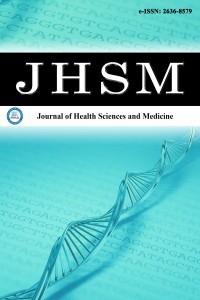
Journal of Health Sciences and Medicine
Yazarlar: ["Ceyhun TÜRKMEN", "Ayşenur ÖZCAN", "Zehra KARAHAN", "İsmail BOZKURT"]
Konular:-
DOI:10.32322/jhsm.1193371
Anahtar Kelimeler:Abdominal hollowing maneuver,Disc herniation,Lower extremity muscles,Surface electromyography,Tandem walking
Özet: Aim: Decreased or delayed multifidus and transversus abdominis (TrA) activity, transition of the TrA from tonic to phasic activity, and increased activity in the more superficial erector spinae muscles are behaviors unique to people with lumbar disc herniation (LDH). This study investigates whether the abdominal hollowing maneuver (AHM), which activates the TrA, can improve the rates of impaired muscle reciprocal activation of the lower extremities due to unilateral LDH during walking, tandem walking, and stair climbing activities. Material and Method: The healthy and affected lower extremities of 17 patients with unilateral LDH were analyzed. The participants performed three activities and three times without the AHM. For the walking activity, the participants took a total of eight steps without deviating from their normal gait pattern. For the tandem walking activity, the participants covered the eight-step distance by performing heel-to-toe walking. For the stair climbing activity, the participants climbed a total of four steps without support from their upper extremities. The researchers visually checked the postures of the participants during all stages of the activities. The ratio of tibialis anterior (TA) and medial gastrocnemius (MGC) electromyographic values that emerged during the activities to the maximum voluntary isometric contraction (MVIC) values of these muscles was called MVIC%. Then the MVIC% values of the TA and MGC were matched, and the muscle reciprocal activation ratio ("MVIC%"-TA/"MVIC%"-MGC) was determined. While the activities were being performed, the MVIC% values of both muscles were measured separately without and with the AHM. Results: Reliability values ranged from 0.87 to 0.99, with an SEM of 2.22 to 11.98. The ICC3,1 was considered “good” or “excellent” for all muscle surface electromyography measurements. During the tandem walking activity performed with the AHM, the reciprocal activation rates of TA: MGC on the affected and healthy legs converged (p=0.010, d=0.71). However, TA: MGC reciprocal activation rates did not differ between the affected and healthy extremities in the walking (p=0.519, d=0.16) or stair climbing (p=0.180, d=0.35) activities performed with the AHM. Conclusion: According to the results of the study, integration of the AHM into tandem walking activity brought the reciprocal activation rates of both legs closer to each other and enabled them to exhibit similar behaviors, even without adherence to any exercise protocol. Therefore, tandem walking can be selected as an appropriate activity to combine with spinal stabilization exercises performed by unilateral L4-L5 radiculopathy patients using the AHM along with the task.